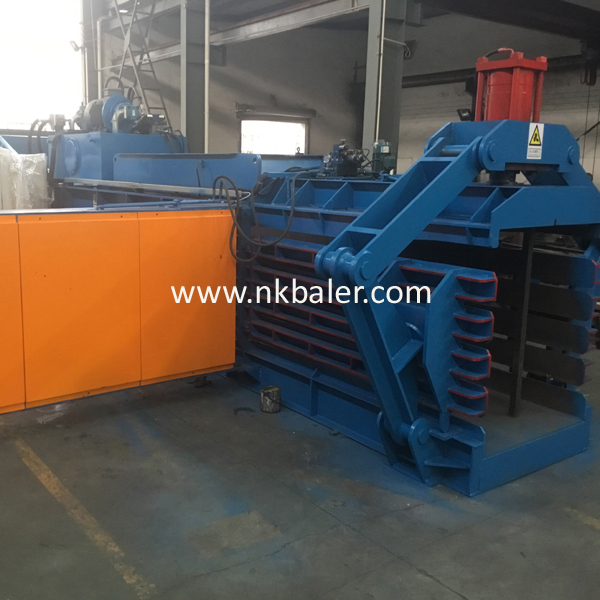Hydraulic baler is a baler that uses the principle of hydraulic transmission. It uses high-pressure liquid generated by the hydraulic system to drive the piston or plunger to perform compression work. This kind of equipment is usually used to compress loose materials such as waste paper, plastic bottles, metal shavings, cotton yarn, etc. into bales of fixed shapes and sizes for easy storage, transportation, and recycling.
In the working principle of a hydraulic baler, the hydraulic pump is one of the key components. The hydraulic pump is driven by a motor or other power source to convert mechanical energy into liquid pressure energy to produce high-pressure oil. This high-pressure oil then flows to the piston or plunger in the hydraulic cylinder. As the pressure of the hydraulic oil increases, the piston will push the pressure plate to exert pressure on the material to achieve compression.
When working, materials are placed in the compression chamber of the baler. After starting the baler, the hydraulic system starts to work, and the pressure plate gradually moves and applies pressure. The volume of the material decreases and the density increases under the action of high pressure. When the preset pressure or bale size is reached, the hydraulic system stops working and the pressure plate remains compressed for a period of time to ensure the stability of the bale. Then, the platen is returned and the packed materials can be removed. Some hydraulic balers are also equipped with a binding device, which can automatically or semi-automatically bundle compressed materials with wire or plastic straps to facilitate subsequent processing.

Hydraulic balers are widely used in the recycling processing industry and industrial production because of their compact structure, high efficiency, and simple operation. Through the work of the hydraulic baler, it not only saves space and reduces transportation costs, but also contributes to environmental protection and resource recycling.
Post time: Feb-02-2024